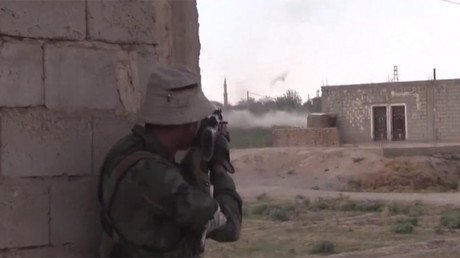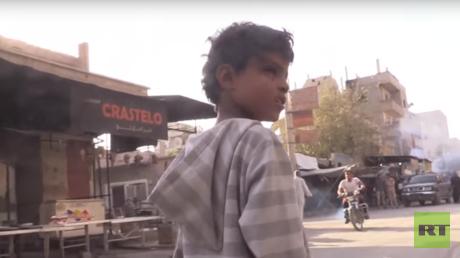RT explores remnants of ISIS quasi-state in liberated Syrian village (VIDEO)
Traveling with the Syrian Army, an RT crew witnessed the remnants of a semi-functional terrorist quasi-state inside a recently liberated Syrian village, where ISIS terrorists tried to impose their own monetary system and other governing institutions.
After capturing vast territories, first across Iraq and then Syria, the Islamic State (IS, formerly ISIS/ISIL) terrorist group went on to establish a Sharia-Law-based form of government. Claiming military, political and religious authority over Muslims in areas under their control, the terrorist organization struggled to create institutions and a financial system that would support the proliferation of jihadism.
However, the last remnants of that system are now quickly disappearing in Syria as the army continues to drive the terrorists out. Coins minted under Islamic State are slowly becoming collector’s items among coin experts, as RT’s Murad Gazdiev found out in the village of Hatla, which was liberated from IS on Monday.
Visiting shops in Hatla village, just east of the Euphrates River, the RT crew discovered copper and silver coinage until recently used in daily transactions. Shop prices were listed in dirhams instead of the Syrian pound used across the country, and residents of this village of Deir-ez Zor province could only use them to purchase locally-produced goods, which ranged from tools and clothes to packaged foods.
The dirham was introduced by IS leader Abu Bakr Al-Baghdadi who envisioned reinstating the ancient Islamic currency using gold, silver and copper coins that were minted by the treasury of the self-proclaimed caliphate.
Currency served as a form of control inside IS-held territory, especially when it came to paying taxes. And those who couldn’t pay in money had to pay in goods.
“Wheat? They took it from the people,” one of the locals told RT, adding that “they took it by force."
Syria terrorists ‘operate near US forces,’ Russian military wants explanations https://t.co/8DYoja8vispic.twitter.com/7VK6FoQCIA
— RT (@RT_com) October 11, 2017
Inside Hatla, RT also discovered an IS prison and police department that was used to instill fear and terrorize the locals. Offenses such as owning a SIM card, being a Syrian government worker or being an infidel carried the death penalty for the locals.
“Here are the ID cards of people ISIS arrested. Here’s a policeman. They arrested many civilians who did nothing,” RT's guide explained.
Leftovers of the Islamic State administration are seen all over the village. However, locals believe any traces of IS will soon be gone as the army continues to score major victories. The army units in Hatla are also clearing the village from booby traps left in residential areas before the terrorists retreated.
“We are now clearing the area. And we won’t rest until all the terrorists are removed from all of Syria,” one of the soldiers told Gazdiev.
According to estimates from Moscow last week, the Syrian military has liberated over 90 percent of Syria from IS forces. Earlier this week, Russia's Ministry of Defense said the Russian Air Force has helped destroy the “economic infrastructure” of IS in Syria and “suppressed” all illegal oil extraction and trade which served as one of the main pillars of terrorists ecomomic activity in Syria.














